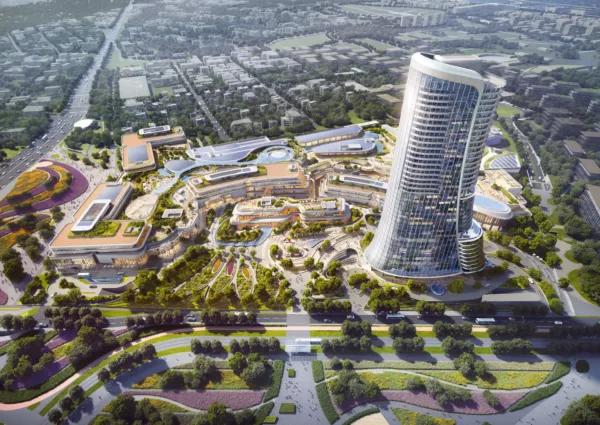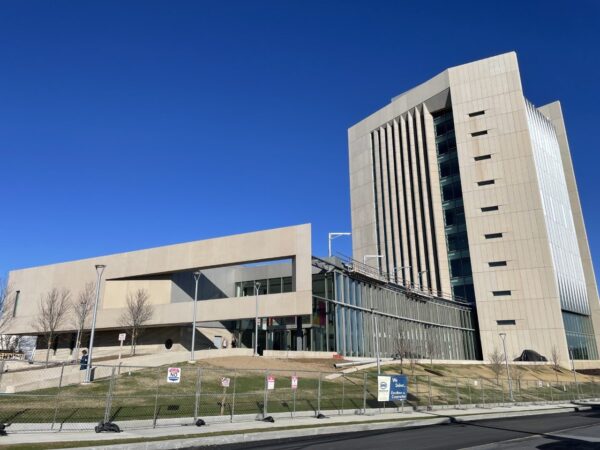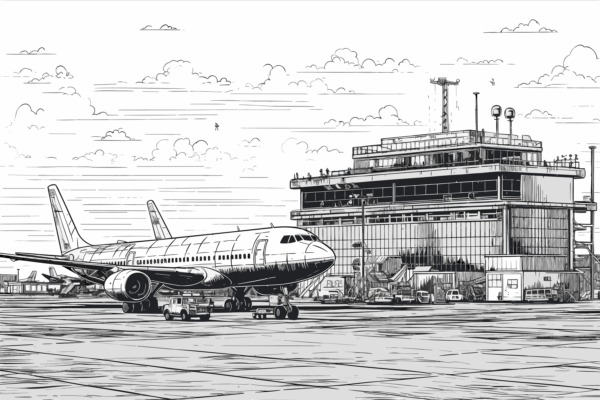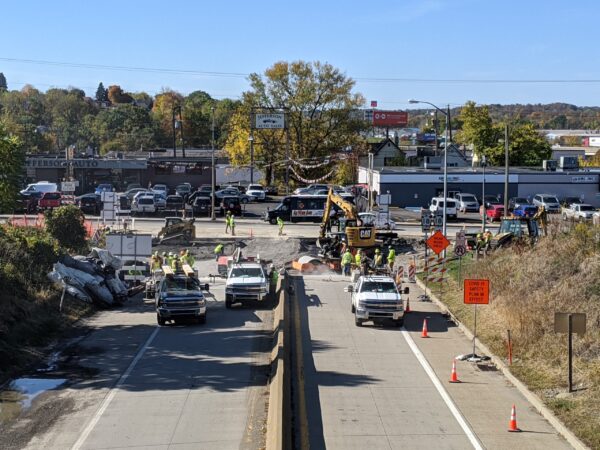

The so-called “Mathilda Monster” is an infamous stretch of road in the City of Sunnyvale, CA. The approximately 1-mile stretch sits along a corridor where Mathilda Avenue intersects with 11 local roads and highways, including State Route 237 and U.S. 101. Being in Silicon Valley, many major employment centers surround the Mathilda Monster. Handling a daily influx of commuters comparable to the San Francisco–Oakland Bay Bridge, the road was well known for creating daily traffic jams and daily headaches.
With Santa Clara Valley Transportation Authority (VTA) contracted as the delivery entity, the City of Sunnyvale undertook a project to improve the flow of traffic and make the Mathilda Monster safer for motorists, bicyclists, and pedestrians. Using a “Complete Street” design—one which designs streets for use by bikers and pedestrians as well as motor vehicles—the project team set out to reconfigure the on- and off-ramps of the U.S. 101 and SR 237 interchanges with Mathilda Avenue, remove and add other intersections along with all necessary traffic signal modifications, and create new left-turn lanes. The project provided for the safety of bikers and pedestrians with bike-lane gaps and pedestrian overcrossings. The project also upgraded the utilities, stormwater treatment facilities, lighting, ramp metering, signage, retaining walls, and VTA’s Orange Line light-rail crossing facilities within the corridor.
However, to improve congested stretches of road, transit agencies must make those roads even more inconvenient for a time, much to the dissatisfaction of the tax-paying public. Thus, it was critically important for the VTA and their project team to complete the project with minimal impacts and as quickly as possible. This included long weekend and late night shifts. VTA was also responsible for making sure that the public was aware of what was happening on the project and when.
In fact, VTA had to inform the public of scheduled work not just out of courtesy, but in order to finance their project. The $42 million project was funded through a mixture of local and gas taxes. Notably, it was the first project funded by the Measure B half-cent sales tax, enacted in 2016 to support infrastructure projects in the region, to break ground. But this money would be lost if the project manager failed to alert the public to scheduled construction activities on time. Fortunately, VTA did an excellent job of keeping the public well informed about potential delays and disruptions commuters might experience as a result of construction. This outreach went a long way to avoiding traffic buildup and securing public satisfaction. “We had an excellent outreach program,” says VTA Project Manager Peter Le, PE. “We sent letters, handed out flyers, used online notifications. It was well executed, but it also added to the burden of maintaining a secure schedule.”
Construction Management Support
To achieve their construction goals for Mathilda Avenue, VTA hired Hill International (Hill) as construction manager and contract administrator for the project.
Hill, the global leader in managing construction risk, regularly manages complex infrastructure projects for clients around the world. In Northern California, Hill’s local team has supported more than 150 projects for VTA and the California Department of Transportation (Caltrans). “Direct experience with regional agencies and local conditions is an invaluable resource on any project,” says Peter. “Hill’s experience in this regard was critical at multiple points during our Mathilda Avenue project.”
Peter explains: “Throughout the design and construction phases of the project, we required support from PG&E, the primary natural gas and electricity supplier in northern and central California. This was primarily related to routing electricity from traffic lights to new traffic lights and designing those changes. It just so happened that, at the time of the project’s design phase in 2018, terrible wildfires were devastating the state. The fires were some of the worst ever seen in terms of the extent of the blazes, the damage to property, and worst of all, the loss of life. So PG&E was detained indefinitely for work related to those fires. Again in 2019, wildfires demanded responses from PG&E personnel.
“Of course, the whole team understood the need for PG&E’s absence, but we had a strict schedule to adhere to for our project. The flow of tax money depended on fast-moving work with predictable milestones and construction times. We had to make certain assumptions to move forward with our design process.
“To make educated and reasonable assumptions, our partners at Hill went to Caltrans to ask for help. Hill Resident Engineer Bharat Patel and Vice President Andy Kreck have working relationships with people from Caltrans—in fact, each actually worked for Caltrans for more than 10 years earlier in their careers. Not only were we able to get the expert help we needed to make certain design decisions, we were able to get it efficiently, avoiding extremely serious and costly delays that would have threatened the feasibility of the project.”
Because of their relationships in the region, Hill was also able to reliably expedite documentation related to the project, such as requests for information or contract approvals. “There were documents that might have taken a week or more to be signed,” says Peter, “but Hill’s professionals were able to get those documents signed in a fraction of the time.”
“We were also responsible for building new relationships on this project,” says Bharat. “From the outset, realizing that this would be a challenging project, we invited all the relevant stakeholders—the City of Sunnyvale, Caltrans, VTA, representatives from the businesses surrounding Mathilda Avenue, and the residents who lived nearby—to participate in decision making and to help set expectations. We kept everyone informed about the progress of the work, discussed issues, and solved problems.”
The Monster Contracts COVID-19
In case the challenges of California’s wildfires were not enough, the COVID-19 pandemic erupted in early 2020, introducing another challenge to the schedule. “The contractor, Ghilotti Construction Company, was understandably nervous about working during this pandemic,” says Bharat. “We were all worried. Nevertheless, California did not place restrictions on construction because of COVID-19, so we continued working.
“Everyone on the project took a variety of precautionary measures to limit the spread of the virus. In some cases, this caused disruptions. Doing challenging roadwork, contractors often work closely together. Now, for safety, the workers had to stay six feet apart at all times and wear extra layers of protective gear. This necessarily slowed the project down.
“On the other hand, most of the employers with facilities along Mathilda Avenue and in the rest of Silicon Valley are high-tech companies. Many of their employees have been able to work remotely through the pandemic. This eased traffic volume down a bit and helped to compensate for the new challenges to the contractor’s work and the threat to the project’s schedule. It is a kudos to everyone at Ghilotti that, despite the work conditions demanded by COVID-19, we were able to capitalize on the reduction in traffic to get the work done on time.”
The Mathilda Mover
As Bharat indicated, the project was completed on time and on budget. Despite the many challenges, anticipated or otherwise, that came up on the project, the whole team and all of the stakeholders collaborated to transform Mathilda Avenue into a more efficient roadway, safer for motorists, bikers, and pedestrians.
“Precisely because the Mathilda Avenue project was a challenge, it highlights the immense creativity and willingness to innovate of everyone on this team,” concludes Peter. “The PG&E situation, the coronavirus situation, and the routine challenges that came up on the project didn’t dismay anyone. We just put our heads together, leveraged our tools and connections, and looked for solutions. The result is a really successful and exemplary infrastructure project that will improve the lives of many people living and working around Sunnyvale.”
“We worked as one unit, one solid team, and we made the whole construction project successful,” adds Bharat. “And here we are at the end of the project and we are celebrating together. VTA is happy, Caltrans is happy, and the stakeholders—they all are happy. At Hill, we are very proud to fulfil what we promised to deliver to the client.”
VTA had planned to hold a ribbon cutting ceremony on site to commemorate the new and improved Mathilda interchange, but as a precaution against COVID-19, they opted for a virtual celebration through a video featuring the project partners, found on VTA’s website. Nevertheless, the motorists, pedestrians, and bikers who frequently grumbled through their former commutes along the Mathilda Monster are already able to pass through the Mathilda Mover more quickly and more safely than ever before. To watch a virtual celebration for the completion of the project, click here.
Share

April 11, 2024 | Articles
A Model Move: Managing Move-In at the Sylvia H. Rambo U.S. Courthouse

April 8, 2024 | Articles

April 4, 2024 | Articles
Driving Growth and Seizing Opportunity: Lukasz Marcinkiewicz Joins Hill as Country Manager, Poland

April 1, 2024 | Articles

March 27, 2024 | Articles
Building the Future: Women’s Leadership and Community Engagement in the Construction Industry

March 25, 2024 | Articles
Leveraging Data Analytics and Dashboards for Enhanced Project Performance

February 26, 2024 | Articles
Continuity, Creativity, and Collaboration: Delivering PennDOT’s Route 18 Signal Upgrade
We and use cookies and other tracking technologies to improve your experience on our website. We may store and/or access information on a device and process personal data, such as your IP address and browsing data, for personalised advertising and content, advertising and content measurement, audience research and services development. Additionally, we may utilize precise geolocation data and identification through device scanning.
Please note that your consent will be valid across all our subdomains. You can change or withdraw your consent at any time by clicking the “Consent Preferences” button at the bottom of your screen. We respect your choices and are committed to providing you with a transparent and secure browsing experience.
| Cookie | Duration | Description |
|---|---|---|
| cookielawinfo-checbox-analytics | 11 months | This cookie is set by GDPR Cookie Consent plugin. The cookie is used to store the user consent for the cookies in the category "Analytics". |
| cookielawinfo-checbox-functional | 11 months | The cookie is set by GDPR cookie consent to record the user consent for the cookies in the category "Functional". |
| cookielawinfo-checbox-others | 11 months | This cookie is set by GDPR Cookie Consent plugin. The cookie is used to store the user consent for the cookies in the category "Other. |
| cookielawinfo-checkbox-necessary | 11 months | This cookie is set by GDPR Cookie Consent plugin. The cookies is used to store the user consent for the cookies in the category "Necessary". |
| cookielawinfo-checkbox-performance | 11 months | This cookie is set by GDPR Cookie Consent plugin. The cookie is used to store the user consent for the cookies in the category "Performance". |
| viewed_cookie_policy | 11 months | The cookie is set by the GDPR Cookie Consent plugin and is used to store whether or not user has consented to the use of cookies. It does not store any personal data. |


